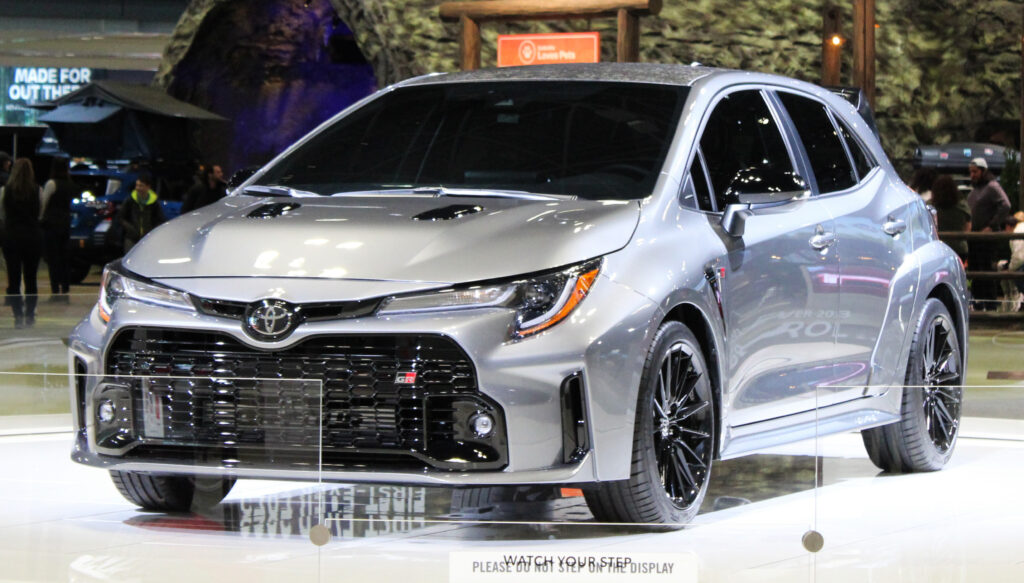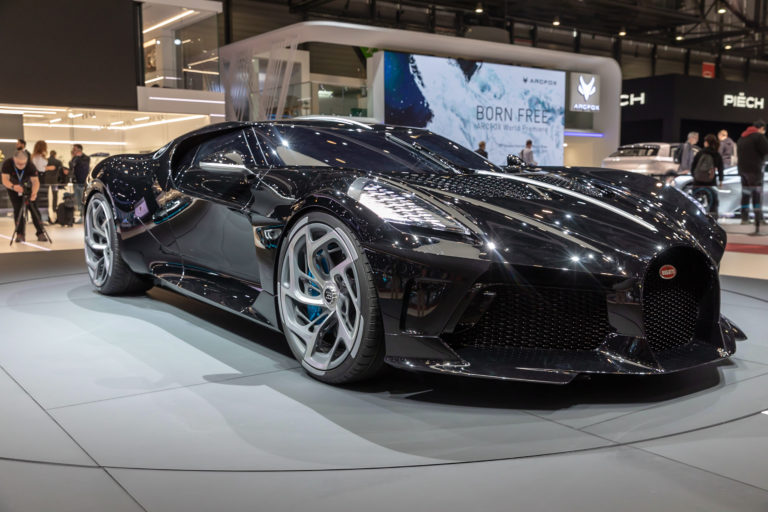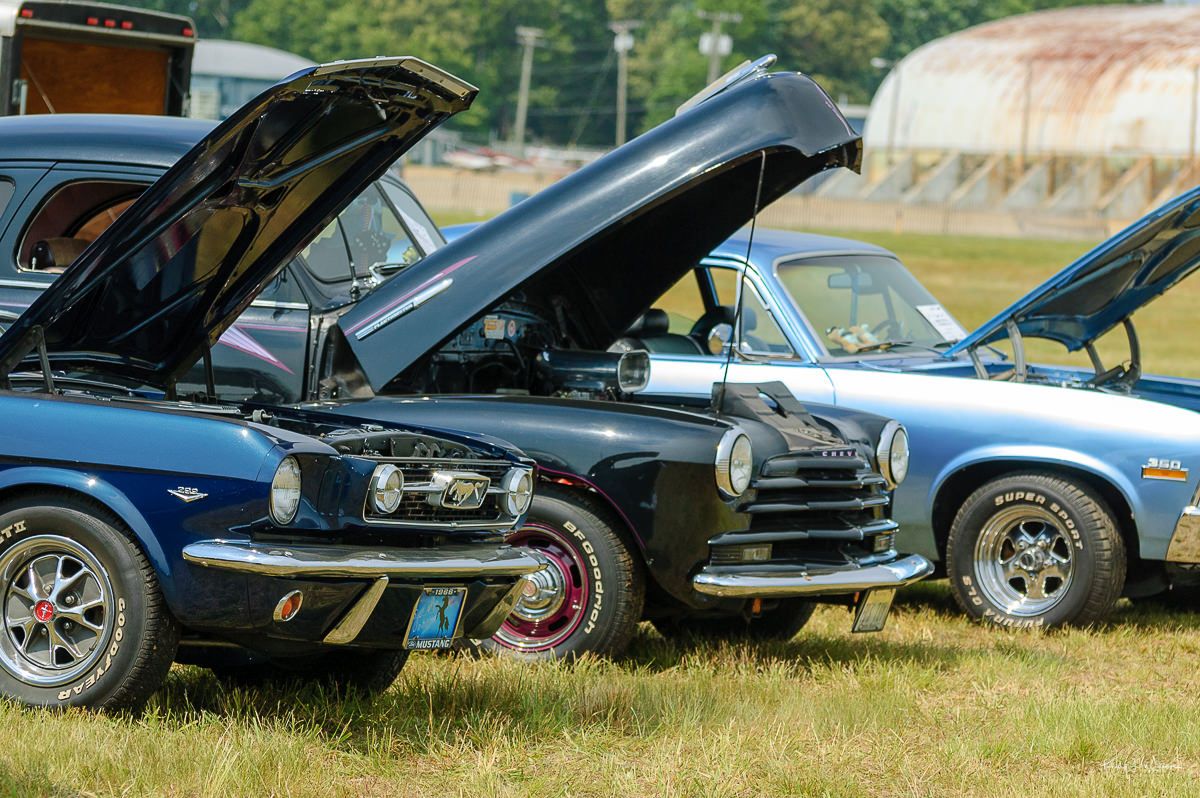
The golden era of American muscle cars, stretching across the 1960s and early 1970s, delivered some of the most exhilarating and dangerously powerful production vehicles ever to hit public roads. This period was a perfect storm, born from intense automotive rivalry, an insatiable appetite for horsepower, and a climate of relatively lax safety regulations that allowed manufacturers to push the envelope with extreme designs and engines. These mechanical beasts often pushed the boundaries of what was prudent, or even safe, for everyday street use, becoming legends for their raw, untamed nature.
Imagine an age before the widespread adoption of electronic stability control, sophisticated traction management systems, or even truly adequate tire technology. Into this landscape, Detroit unleashed cars that put unprecedented power in the hands of everyday drivers, sometimes with spectacular and tragic consequences. Many of these vehicles featured power-to-weight ratios that rivaled exotic sports cars of their day, yet came with none of the sophisticated handling capabilities needed to harness such performance safely.
What makes these machines so captivating, even today, is precisely their mechanical excess—they were four-wheeled statements that challenged the very notion of what belonged on public streets. This deep dive will explore some of the most outrageously overpowered muscle cars that were, for better or worse, deemed road-legal despite their barely contained fury. Join us as we peel back the layers on these iconic, and at times, terrifying, street monsters.
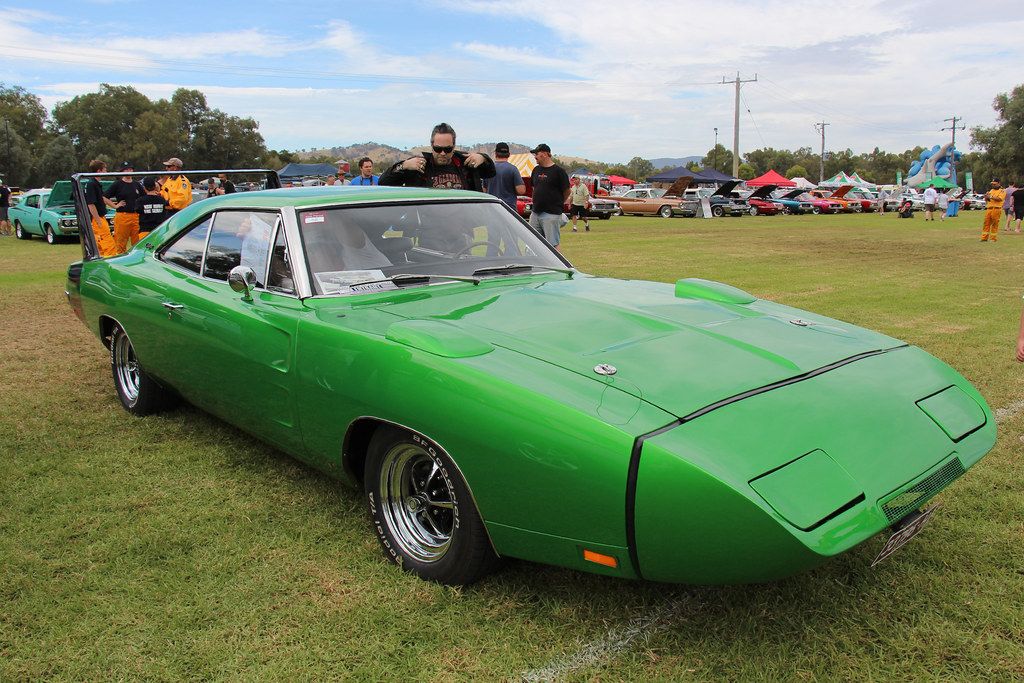
1. **1969 Dodge Charger Daytona/Plymouth Superbird**: The 1969 Dodge Charger Daytona and its 1970 Plymouth Superbird sibling stand as perhaps the most visually outrageous and overpowered muscle cars ever approved for public roads. These “aero warriors” were created specifically to dominate NASCAR, featuring cartoonishly extreme aerodynamic modifications that seemed better suited to aircraft than automobiles. Imagine an 18-inch pointed nose cone, a towering 23-inch rear wing, and flush-mounted rear windows, all transforming the standard Charger or Road Runner profile into something truly otherworldly.
While their appearance drew stares, it was the powertrains that made these cars genuinely dangerous on public roads. The most potent option was the legendary 426 Hemi V8, officially rated at 425 horsepower but widely acknowledged to produce well over 500 in reality. Mopar’s strategy of deliberately underrating horsepower figures aimed to keep insurance companies at bay, meaning these cars delivered far more power than advertised. Equipped with the Hemi and a four-speed manual, these winged warriors rocketed to 60 mph in under 5.5 seconds, achieving top speeds near 200 mph—blistering performance for the era.
What truly made these cars ill-suited for street use wasn’t just their raw power, but their specialized construction and challenging handling characteristics. The aerodynamic modifications were designed for high-speed ovals, not for city streets; the extended nose made parking nearly impossible, compromised visibility, and created alarming front-end lift at high speeds. Standard drum brakes were wholly inadequate, and bias-ply tires struggled with traction. Contemporary road tests noted these cars felt skittish and unpredictable, requiring experienced hands to manage safely, often with the rear end breaking loose without warning. With only 503 Daytonas and approximately 1,935 Superbirds produced, these winged marvels epitomize Detroit’s extreme willingness to put barely disguised race cars into public hands—a phenomenon unimaginable today.
Car Model Information: 2020 BMW X3 xDrive30i
Name: Dodge Charger Daytona
Caption: 1969 Dodge Charger Daytona
Manufacturer: Dodge
Production: 1969–1970,2006–2009,2013,2017–2023
Class: Muscle car
Layout: FR layout
Categories: 1960s cars, 1970s cars, 2000s cars, All articles needing additional references, All articles with unsourced statements
Summary: Dodge produced three separate models with the name Dodge Charger Daytona, all of which were modified Dodge Chargers. The name was taken from Daytona Beach, Florida, which was an early center for auto racing and still hosts the Daytona 500, NASCAR’s premier event. The original Dodge Charger Daytona was designed to beat the competition in NASCAR racing. It was the first NASCAR vehicle to reach 200 miles per hour, which was a major milestone at the time.
The first use of the ‘Daytona’ name for a car was on a version of the Studebaker Lark. The Daytona was the performance model of the compact Lark, and it was produced during the 1960s.
Get more information about: Dodge Charger Daytona
Buying a high-performing used car >>>
Brand: DODGE Model: CHARGER DAYTONA
Price: $19,649 Mileage: 66,810 mi.
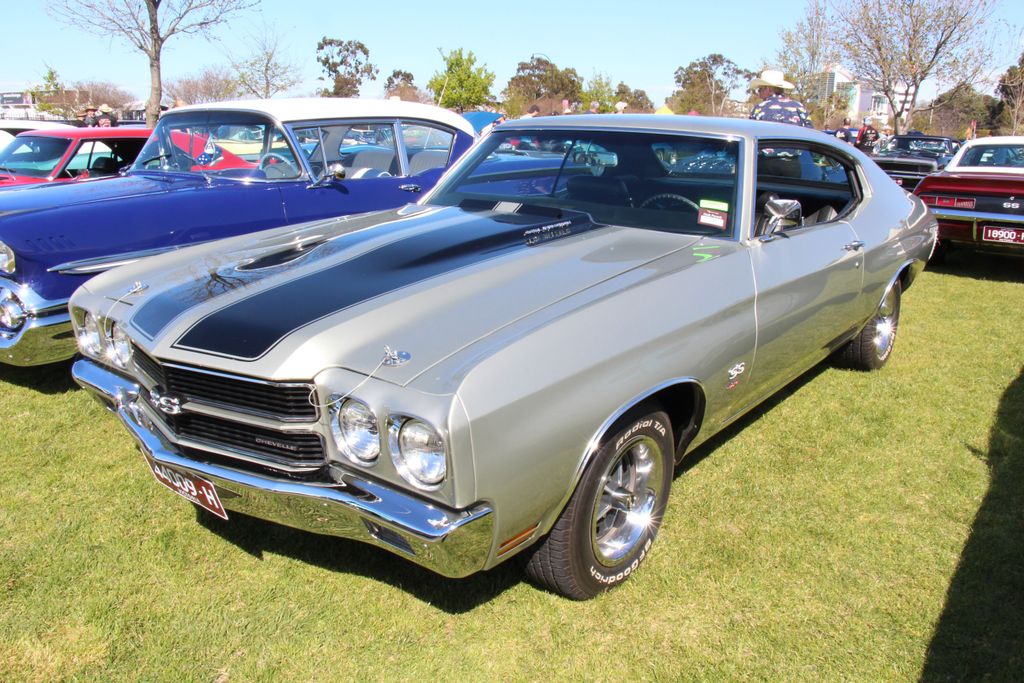
2. **1970 Chevrolet Chevelle SS 454 LS6**: The 1970 Chevelle SS 454 with the LS6 engine option represents the high-water mark of GM’s contribution to the muscle car horsepower wars, creating what many enthusiasts consider the ultimate street fighter of its era. At a time when manufacturers were locked in combat for horsepower supremacy, Chevrolet unleashed what was arguably the most excessive weapon in their arsenal: a 454 cubic-inch big-block V8. This engine was fitted with a high-lift, solid-lifter camshaft, an 11.25:1 compression ratio, and topped with a massive 780 CFM Holley four-barrel carburetor, making it a true performance monster.
Officially rated at 450 horsepower and 500 lb-ft of torque, the LS6 Chevelle’s actual output was widely believed to exceed 500 horsepower—a number deliberately underreported to keep insurance rates manageable for buyers. This staggering power figure was accompanied by a relatively lightweight package, around 3,800 pounds, and delivered through either a sturdy Muncie four-speed manual or three-speed Turbo-Hydramatic transmission to a 12-bolt rear end with limited-slip differential. The performance was seismic: 0-60 mph in approximately 5.4 seconds, with quarter-mile times in the low 13-second range at over 108 mph. These benchmark figures were achieved with primitive bias-ply tires.
What made the LS6 Chevelle particularly dangerous on public roads was this perfect storm of excessive power, rudimentary chassis technology, and surprisingly broad accessibility. The car’s suspension system, essentially the same setup used on much less powerful Chevelles, was wholly inadequate for managing the LS6’s brutal power. Front-heavy weight distribution led to understeer that could transition to catastrophic oversteer, and standard brakes were drastically overmatched, leading to severe fade. Period road tests often advised readers that the LS6 Chevelle required “respect and considerable driving skill” to operate safely, a diplomatic way for automotive journalism to convey that this car could be lethal in the wrong hands.
Car Model Information: 2020 BMW X3 xDrive30i
Name: Chevrolet Chevelle
Caption: 1970 Chevrolet Chevelle SS 396 Sport Coupe
Manufacturer: Chevrolet
Production: 1963–1977
ModelYears: 1964–1977
Class: Mid-size
Platform: GM A platform (RWD)
Layout: FR layout
Successor: Chevrolet Malibu
Categories: 1970s cars, All articles needing additional references, All articles that may contain original research, All articles with specifically marked weasel-worded phrases, All articles with unsourced statements
Summary: The Chevrolet Chevelle is a mid-sized automobile that was produced by the Chevrolet division of General Motors (GM) in three generations for the 1964 to 1977 model years. Part of the GM A-body platform, the Chevelle was one of Chevrolet’s most successful nameplates. Body styles included coupes, sedans, convertibles, and station wagons. The “Super Sport” versions were produced through the 1973 model year and Lagunas from 1973 through to 1976.
After a four-year absence, the El Camino was reintroduced as part of the new Chevelle lineup in 1964.
From 1964 to 1969, GM of Canada sold a modified version of the Chevelle that included a Pontiac-style grille, and a LeMans instrument panel, marketed as the Beaumont.
The Malibu was the top-of-the-line model to 1972, and completely replaced the Chevelle nameplate starting with the redesigned, and downsized 1978 model year.
Get more information about: Chevrolet Chevelle
Buying a high-performing used car >>>
Brand: Chevrolet Model: Chevelle SS 454 LS6
Price: $19,649 Mileage: 66,810 mi.
Read more about: 19 Legendary Chevrolet Models That Defined Automotive History
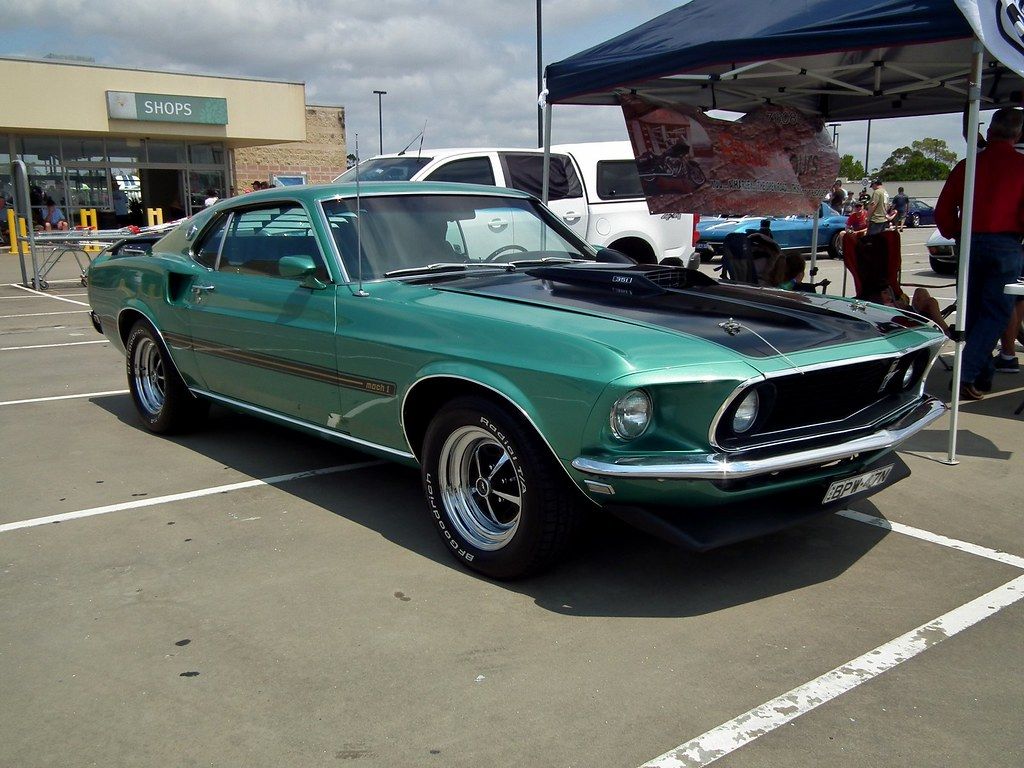
3. **1969 Ford Mustang Boss 429**: The 1969 Ford Mustang Boss 429 stands as one of the most dangerously overpowered production cars of its era, created not for practicality or even street racing dominance, but purely to homologate Ford’s massive new hemispherical combustion chamber engine for NASCAR competition. The “Boss 9,” as enthusiasts affectionately called it, represented an engineering exercise taken to extremes. It essentially answered the question: “What happens when you stuff the largest, most powerful engine possible into a car never designed to accommodate it?” The result was a vehicle whose street manners were heavily compromised by its singular, race-bred purpose.
The Boss 429 engine was a true monster by any standard: a 429 cubic-inch V8 with aluminum heads featuring enormous hemispherical combustion chambers, forged pistons, and a 735 CFM Holley carburetor. While officially rated at a modest 375 horsepower—a number underreported for insurance—its actual output widely exceeded 500 horsepower and 490 lb-ft of torque. Getting this massive engine into the Mustang’s engine bay required extensive modifications by Kar Kraft, including widening shock towers and relocating the battery, just to make the engine fit.
The outcome of these extreme modifications was a front-end weight bias so severe that handling became dangerously unpredictable, with a persistent tendency toward dramatic understeer that could transition to sudden oversteer when power was applied. The engine’s design for sustained high-RPM NASCAR operation resulted in a temperamental street performer that ran poorly at low RPMs but delivered explosive power at higher speeds, making it extraordinarily difficult to drive smoothly in traffic. Contemporary road tests noted the Boss 429 was even slower than less powerful Mustangs due to its peaky power delivery and massive front weight. A magazine famously described it as “a very unusual Mustang… not for the man who has to have the quickest car on the street.” With only 859 units produced, the Boss 429 exemplifies Detroit’s pursuit of racing dominance over everyday drivability.
Car Model Information: 2020 BMW X3 xDrive30i
Caption: 1969 Boss 429
Layout: Longitudinal engine
Manufacturer: Ford Motor Company
Production: 1969–1970
Name: Mustang Boss 429
Class: Muscle car
BodyStyle: coupé
Assembly: Dearborn, Michigan
Height: 50.4 in
Abbr: on
Length: 187.4 in
Width: 71.7 in
Engine: 429 cuin
Transmission: manual transmission
Weight: 3870 lb
Categories: All Wikipedia articles needing clarification, All articles needing additional references, All articles with unsourced statements, Articles needing additional references from August 2008, Articles with short description
Summary: The Boss 429 Mustang is a high-performance Ford Mustang variant that was offered by Ford in 1969 and 1970. It featured a race-designed 429 cu in (7.0 L) semi-hemispherical head version of the big block 429 V8, offered in the car both to homologate the engine for NASCAR racing and to offer a bigger, more-powerful version of the popular small block 5 L Boss 302 Mustang.
The price of all the performance and modifications was steep: at nearly $5,000 a Boss 429 was roughly twice the price of the base model inline-6 Mustang. A total of 1,359 Boss 429s were produced.
Get more information about: Boss 429 Mustang
Buying a high-performing used car >>>
Brand: Ford Model: Mustang Boss 429
Price: $19,649 Mileage: 66,810 mi.
Read more about: The 16 Most Iconic American Muscle Cars of the 60s & 70s
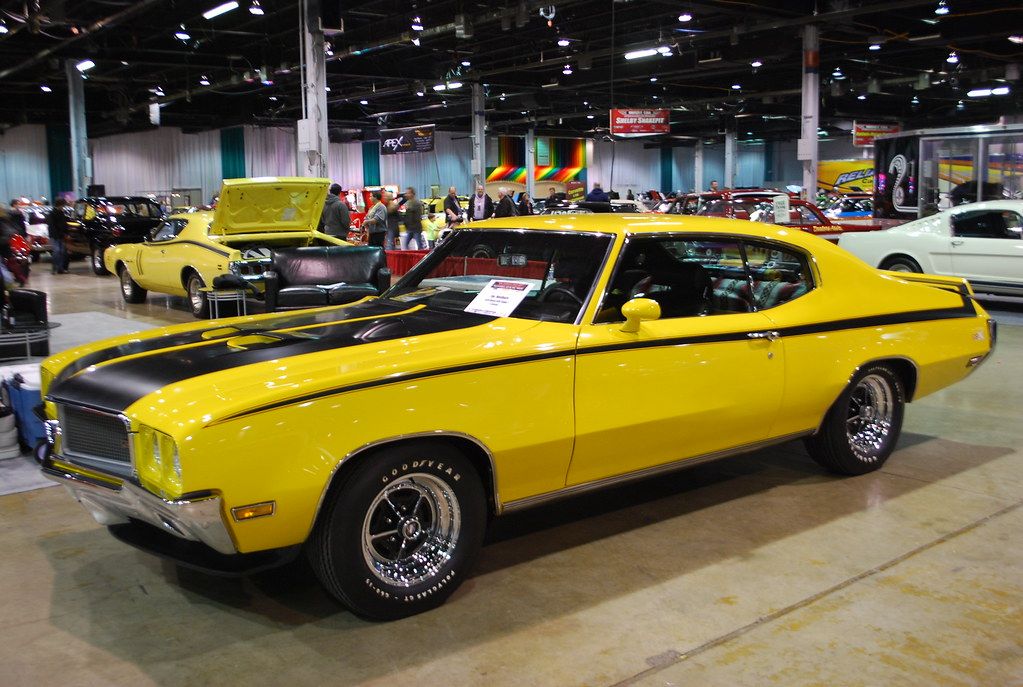
4. **1970 Buick GSX Stage 1**: The 1970 Buick GSX Stage 1 shattered the notion that Buick only built “gentleman’s cars,” delivering instead one of the most savagely powerful muscle cars ever to wear a production badge. What made the GSX particularly excessive was how it cloaked its ferocious performance potential beneath Buick’s traditionally more upscale, sophisticated brand image—a true wolf in slightly more genteel wolf’s clothing. This was a car that could effortlessly blend in with traffic, only to reveal its true, untamed nature with the slightest provocation of the throttle.
At the heart of this beast lay the Stage 1 version of Buick’s 455 cubic-inch V8, officially rated at a seemingly conservative 360 horsepower but producing an earth-moving 510 lb-ft of torque. This was the highest torque rating of any American production car until the advent of modern supercars decades later. Like many muscle cars of the era, these figures were deliberately underreported, with actual output estimated closer to 400 horsepower. The Stage 1 delivered over 500 lb-ft at just 2,800 RPM, creating neck-snapping acceleration from virtually any speed, yielding impressive 0-60 and quarter-mile times.
The GSX package added heavy-duty suspension, power front disc brakes, and performance-oriented gear ratios, but these upgrades were still insufficient to manage the engine’s prodigious torque. The suspension, tuned more for comfort, allowed the car to break its rear wheels loose with moderate throttle, even at highway speeds. Its additional weight from luxury features, combined with soft suspension and inadequate tires, created a dangerous combination of massive power in a chassis that could wallow and pitch. Period road tests often noted the GSX required a delicate touch to prevent unpredictable rear-end steps during cornering. With only 678 total GSX models produced, this Buick stands as a rare and excessive muscle car unleashed on public roads.
Read more about: The 16 Most Iconic American Muscle Cars of the 60s & 70s
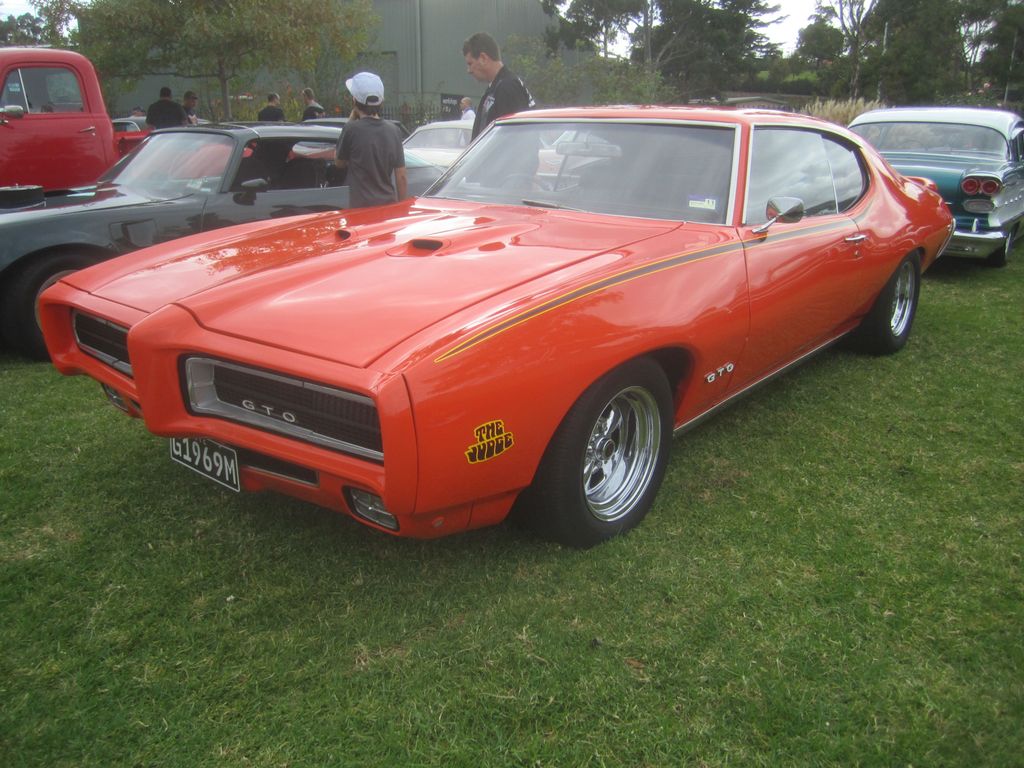
5. **1969 Pontiac GTO Judge Ram Air IV**: The 1969 Pontiac GTO Judge with the Ram Air IV engine option represented one of the most excessive and track-focused muscle cars ever disguised as a daily driver. While the standard GTO had already established itself as the original muscle car and a cultural icon, the Judge Ram Air IV variant pushed the envelope into territory that made it questionably suited for public road use, especially in the hands of inexperienced drivers. This was not just a powerful car; it was a testament to how far a manufacturer was willing to go to win the horsepower wars, even if it meant creating a street menace.
The Ram Air IV 400 cubic-inch V8 was, in essence, a thoroughbred race engine barely detuned for street use. It featured round-port high-flow cylinder heads, a high-lift camshaft, and a four-barrel Quadrajet carburetor fed by an elaborate cold-air induction system through twin hood scoops. Officially rated at 370 horsepower, the actual output was widely acknowledged to exceed 400 horsepower and 445 lb-ft of torque, making it a true force to be reckoned with on any road.
What made this powertrain particularly ill-suited for street use was its high-strung nature and uncompromising power delivery; the aggressive camshaft created a rough idle and poor low-end torque, making normal driving difficult. However, once the tachometer swung past 3,500 RPM, the Ram Air IV came alive with an explosive rush of power that could easily overwhelm the car’s handling and bias-ply tires. Motor Trend famously noted it was “not for the timid or inexperienced,” acknowledging its hairy handling. Despite the Judge package’s suspension tuning improvements, they were inadequate for the immense power, exacerbated by the car’s front-heavy weight distribution and unpredictable handling. Only 239 of the approximately 6,800 Judge GTOs produced in 1969 came with the Ram Air IV, highlighting its extreme nature and rarity.
Continuing our exploration of muscle machines that pushed the boundaries of street legality, we now delve into five more iconic vehicles that defied practicality, revealing their uncompromising performance, unique challenges, and enduring impact on automotive history. These weren’t just fast cars; they were four-wheeled statements of mechanical excess, designed with a singular, often brutal, purpose that made them a thrilling, yet terrifying, presence on any public road. Their stories are a testament to an era when Detroit put raw power into drivers’ hands with little regard for the consequences.
Car Model Information: 2020 BMW X3 xDrive30i
Name: Pontiac GTO
Caption: 2005 Pontiac GTO
Manufacturer: Pontiac (automobile),Holden
Class: Mid-size car,Compact car,Mid-size car
Production: 1963–1974,2003–2006
Predecessor: Pontiac Tempest
Layout: Front-engine, rear-wheel-drive layout
Categories: 1970s cars, 2000s cars, All articles with unsourced statements, Articles with short description, Articles with unsourced statements from October 2008
Summary: The Pontiac GTO is a front-engine, rear-drive, two-door, and four-passenger automobile manufactured and marketed by the Pontiac division of General Motors over four generations from 1963 until 1974 in the United States — with a fifth generation made by GM’s Australian subsidiary, Holden, for the 2004 through 2006 model years.
The first generation of the GTO is credited with popularizing the muscle car market segment in the 1960s. Some consider the Pontiac GTO to have started the trend with all four domestic automakers offering a variety of competing models.
For the 1964 and 1965 model years, the GTO was an optional package on the intermediate-sized Pontiac LeMans. The 1964 GTO vehicle identification number (VIN) started with 22, while the 1965 GTO VIN began with 237. The GTO was designated as a separate Pontiac model from 1966 through 1971 (VIN 242…). It became an optional package again for the 1972 and 1973 intermediate LeMans. For 1974, the GTO was an optional trim package on the compact-sized Ventura.
The GTO model was revived for the 2004 through 2006 model years as a captive import for Pontiac, a left-hand drive version of the Holden Monaro, itself a coupé variant of the Holden Commodore.
Get more information about: Pontiac GTO
Buying a high-performing used car >>>
Brand: Pontiac Model: GTO Judge
Price: $19,649 Mileage: 66,810 mi.
Read more about: The 19 Greatest American Cars That Defined an Era
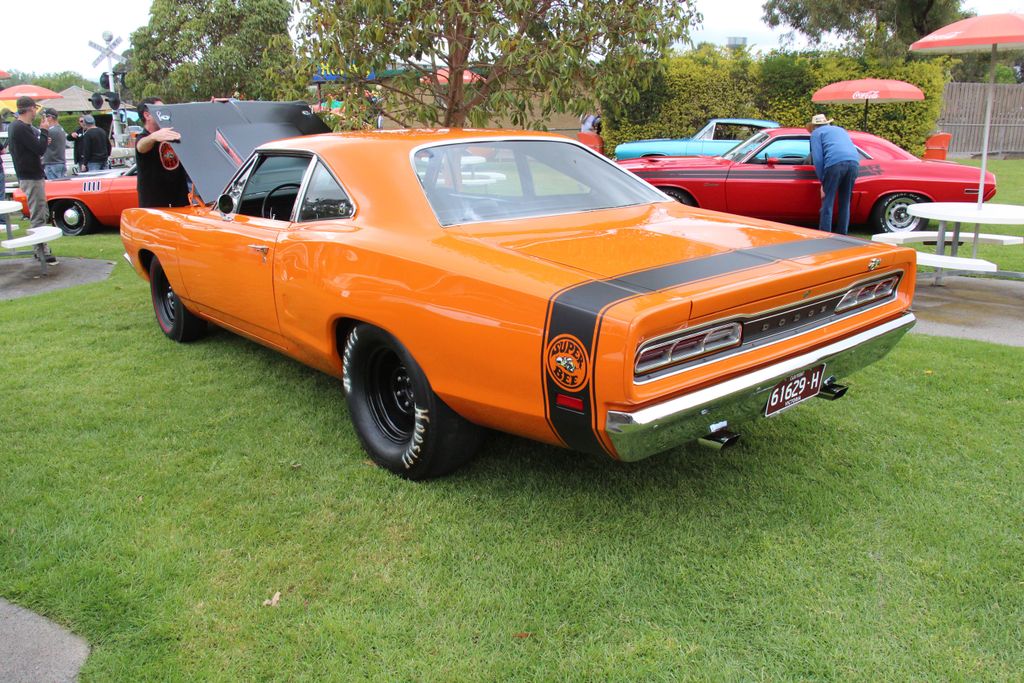
6. **1969 Dodge Coronet Super Bee A12**The 1969 Dodge Coronet Super Bee A12, often affectionately dubbed the “Six Pack” Super Bee, stands as one of the most unapologetically excessive muscle cars ever unleashed upon public roads. This wasn’t merely a powerful automobile; it was a vehicle so singularly focused on achieving straight-line performance that its very existence as a street-legal machine bordered on irresponsibility. The A12 package transformed the already potent Super Bee into what was, in essence, a barely disguised drag strip special, designed to dominate the quarter-mile. Dodge’s uncompromising vision prioritized raw acceleration above all else, creating a truly brutal, unrefined machine.
At the heart of this Mopar beast was the mighty 440 cubic-inch V8, equipped with the infamous “Six Pack” induction system—a trio of Holley two-barrel carburetors perched atop an Edelbrock aluminum intake manifold. This formidable setup was officially rated at 390 horsepower and 490 lb-ft of torque, though like many muscle cars of its era, these figures were deliberately understated, with actual output estimated closer to a ferocious 450 horsepower. This massive torque was available almost immediately within the rev range, bestowing the car with the alarming ability to break traction at virtually any speed, a characteristic that was thrilling on the strip but precarious on the street.
Dodge’s relentless focus on acceleration for the A12 meant significant compromises in other areas, particularly safety and drivability. The package included a lightweight fiberglass lift-off hood, secured with metal pins to save crucial ounces, and a robust 4.10:1 Dana 60 rear axle with a Sure Grip limited-slip differential for maximum hook-up. Astonishingly, the car came standard with drum brakes at all four corners, a glaring safety compromise given its staggering performance potential. Contemporary road tests reported the A12’s performance to be staggering for the era—0-60 mph in approximately 5.3 seconds and quarter-mile times in the high 12-second range straight from the factory. However, this brute-force capability came at a cost: it was virtually undrivable in wet conditions due to its excessive power and the period’s inadequate tire technology, and its heavy-duty suspension, while aiding straight-line runs, made it unpredictable in corners. Its unrefined nature, marked by temperamental carburetors and poor throttle modulation, led a magazine to famously describe it as “a very specialized piece… a machine you don’t want to drive to work every day.” With only 1,907 A12 package Super Bees produced, it stands as an extreme testament to prioritizing raw performance over road manners.
Car Model Information: 2020 BMW X3 xDrive30i
Name: Dodge Super Bee
Manufacturer: Chrysler Corporation
Production: 1968–1971 , 1970–1980 (Mexico only) , 2007–2009 , 2012–2013
Layout: FR layout
Class: Muscle car
Caption: 1969 Dodge Coronet Super Bee A12 “Six Pack”
Categories: 1960s cars, 1970s cars, All articles needing additional references, All articles with dead external links, All articles with unsourced statements
Summary: The Dodge Super Bee is a mid-sized muscle car marketed by Dodge, that was produced for the 1968 through 1971 model years.
In Mexico, the Super Bee was based on a compact-sized Chrysler platform and marketed from 1970 until 1980.
The Super Bee model name was resurrected for the 2007, 2008, 2009, 2012, and 2013 Dodge Charger Super Bee models.
Get more information about: Dodge Super Bee
Buying a high-performing used car >>>
Brand: Dodge Model: Coronet Super Bee A12
Price: $19,649 Mileage: 66,810 mi.
Read more about: 18 Legendary Dodge Cars Known for Their Power and Speed
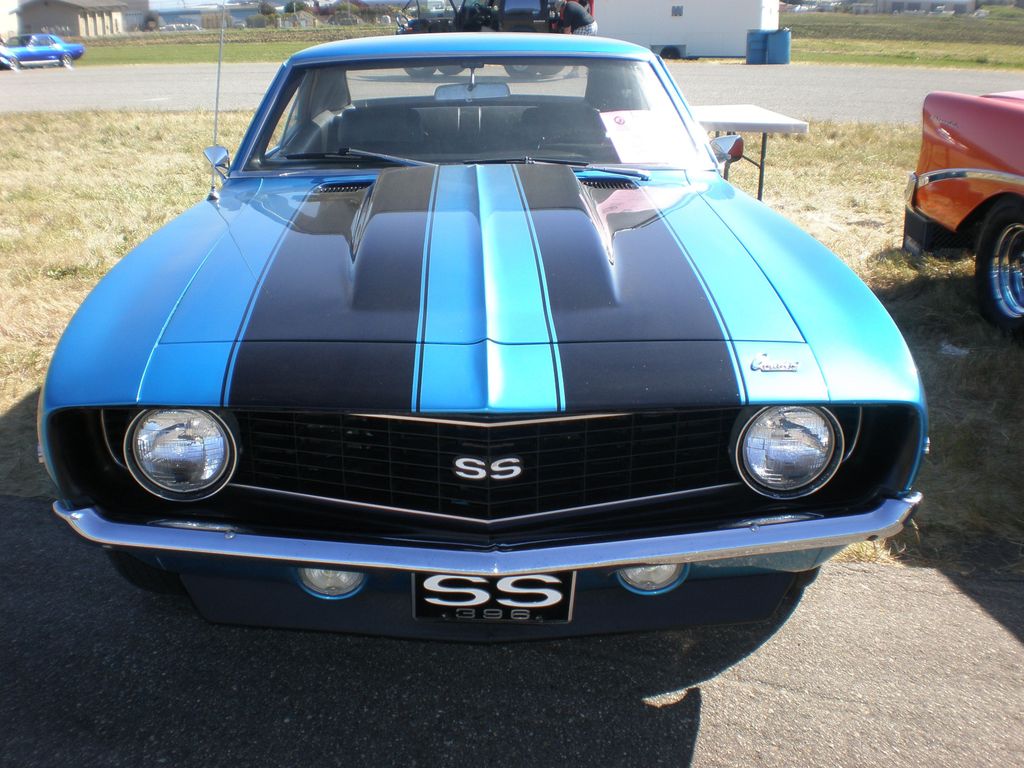
7. **1969 Chevrolet Camaro ZL1**Stepping into the realm of the truly extreme, the 1969 Chevrolet Camaro ZL1 represents perhaps the most excessive factory hot rod ever thinly disguised as a production vehicle. This was a car so highly specialized and overtly overpowered that its street-legal status felt more like a technicality than an intention. Created primarily for competitive drag racing through Chevrolet’s secretive Central Office Production Order (COPO) system, the ZL1 bypassed conventional production constraints, delivering a bona fide track weapon with little more than license plates separating it from purpose-built racers.
The formidable core of this beast was the legendary all-aluminum 427 cubic-inch ZL1 engine. This engineering marvel was essentially a detuned version of the fearsome L88 racing engine utilized in Corvettes at Le Mans, boasting aluminum cylinder heads and blocks—an unheard-of feature in production cars of the era. Coupled with a heavy-duty forged rotating assembly, a solid-lifter camshaft, and a robust 12.5:1 compression ratio, this engine was a true powerhouse. While officially rated at a comically conservative 430 horsepower, its actual output was widely acknowledged to soar beyond 500 horsepower and an equal amount of lb-ft of torque, making it a pure, unadulterated force of nature.
What truly rendered the ZL1 Camaro ill-suited for conventional street use was its unyielding, uncompromising nature. The high-compression engine was notoriously temperamental, demanding premium fuel, prone to overheating in traffic, and delivering abysmal fuel economy. Its lopey, unstable idle made routine driving a constant exercise in concentration. The powerband was notoriously peaky and explosive, offering relatively little low-end power but unleashing a violent, almost instantaneous rush of acceleration once the engine climbed into its higher RPMs. Despite its explicit racing pedigree, the ZL1 received surprisingly minimal chassis upgrades over standard Camaros. While it featured Chevrolet’s best available suspension—the F41 heavy-duty springs and shocks—it remained woefully inadequate for controlling the engine’s monstrous power, especially considering the primitive tire technology of the era. The standard 14-inch wheels fitted with relatively narrow bias-ply tires were hopelessly overmatched, leading to perpetual traction issues even in ideal conditions. Contemporary road tests frequently highlighted its challenging street manners, with common observations noting it was “virtually undrivable in wet conditions” and “requires constant attention.” The ZL1’s extreme nature was further reflected in its staggering price; the engine option alone added $4,160 to the base Camaro’s $2,700 price tag, nearly tripling the total cost. This astronomical figure meant that only a mere 69 examples were ever built, solidifying its status as one of the rarest and most valuable muscle cars ever produced and a testament to Detroit’s audacious willingness to unleash thinly disguised race cars on the public.
Car Model Information: 2020 BMW X3 xDrive30i
Name: Chevrolet Camaro
Manufacturer: Chevrolet
Production: 1966–2002,2009–2023
ModelYears: 1967–2002,2010–2024
Class: Pony car
BodyStyle: coupe,convertible
Platform: GM F platform,GM Zeta platform,GM Alpha platform
Layout: Front-engine, rear-wheel-drive layout
Categories: 1970s cars, 1980s cars, 1990s cars, 2+2 coupés, 2000s cars
Summary: The Chevrolet Camaro is a mid-size American automobile manufactured by Chevrolet, classified as a pony car. It first went on sale on September 29, 1966, for the 1967 model year and was designed to compete with the Ford Mustang. The Camaro shared its platform and major components with the Firebird, produced by General Motors‘ Pontiac division that was also introduced for the 1967 model year.
Four distinct generations of the Camaro were developed before production ended in 2002. The nameplate was revived on a concept car that evolved into the fifth-generation Camaro; production started on March 16, 2009.
Production of the sixth generation of the Camaro ended in December 2023, for the 2024 model year.
Get more information about: Chevrolet Camaro
Buying a high-performing used car >>>
Brand: Chevrolet Model: Camaro ZL1
Price: $19,649 Mileage: 66,810 mi.
Read more about: 19 Legendary Chevrolet Models That Defined Automotive History
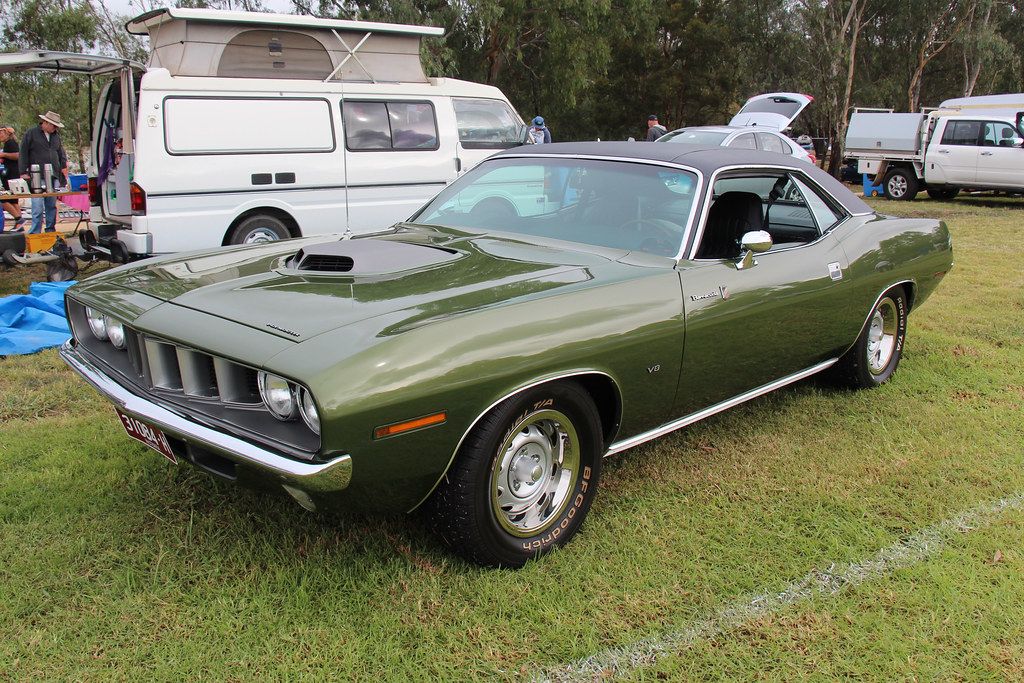
8. **1971 Plymouth Hemi ‘Cuda**The 1971 Plymouth Hemi ‘Cuda stands as one of the quintessential examples of unrestrained muscle car excess, marking one of the final, defiant roars before stringent emissions regulations and the looming oil crisis effectively brought the original muscle car era to a close. As one of the last production vehicles to house Chrysler’s legendary 426 Hemi engine before its discontinuation, the ’71 Hemi ‘Cuda was, by all accounts, a street-legal drag racer. It offered minimal, if any, concessions to the practicalities of everyday drivability or the emerging concerns for passenger safety.
At the core of this fearsome machine resided the legendary 426 Hemi V8, renowned for its distinctive hemispherical combustion chambers, twin four-barrel carburetors, and a robust forged crankshaft. While officially rated at a potent 425 horsepower and 490 lb-ft of torque, its actual output was widely acknowledged to surge well past 500 horsepower in stock configuration. This colossal power figure proved particularly problematic when shoehorned into the ‘Cuda’s relatively lightweight E-body platform. The resulting, dangerously imbalanced power-to-weight ratio created a vehicle that few drivers, regardless of skill, could genuinely manage safely on public roads.
The ’71 Hemi ‘Cuda’s uncompromising focus on straight-line performance dictated a series of significant sacrifices in other critical areas, rendering it profoundly ill-suited for conventional street use. The Hemi engine itself was notoriously temperamental, demanding meticulous tuning and constant maintenance of its dual carburetors to operate properly. It was infamous for delivering abysmal fuel economy, often plunging into single-digit miles per gallon, and had a propensity to run excessively hot in urban traffic. Crucially, it produced such an overwhelming torrent of torque that even the most minor throttle inputs could instantly break the rear wheels loose, making smooth, controlled driving a near impossibility. The ‘Cuda’s handling characteristics were equally challenging. Despite its aggressive styling, complete with the iconic “Shaker” hood, the chassis was woefully unequipped to effectively channel the Hemi’s brutal power. Its torsion bar front suspension and leaf spring rear setup, while adequate for launching off the line, resulted in highly unpredictable handling during cornering, particularly when power was applied mid-turn. Contemporary road tests frequently cited significant body roll, persistent understeer, and an alarming tendency for the rear end to suddenly break loose without warning, even during routine maneuvers. Compounding its problematic nature, insurance companies had already begun specifically targeting Hemi-powered vehicles with exorbitant premiums, recognizing the extreme risk they posed. These prohibitive premiums often eclipsed the car’s monthly payment, effectively placing the Hemi ‘Cuda out of reach for many prospective buyers and contributing significantly to its extreme rarity; only 108 hardtops and a mere 11 convertibles were equipped with the Hemi engine in 1971. Period road tests were remarkably blunt about the car’s nature, with one noting that the Hemi ‘Cuda required “the skills of a test pilot” to drive safely at its limits, while another described it as “almost too much car for the street.” These were not exaggerations; the perilous combination of massive power, rudimentary chassis development, primitive tire technology, and minimal safety features undeniably created one of the most dangerous production cars ever offered to the American public.
Car Model Information: 2020 BMW X3 xDrive30i
Caption: 1970 Hardtop Coupe
Name: Plymouth Barracuda
Manufacturer: Plymouth (automobile)
Production: 1964–1974
Assembly: Fenton, Missouri,Hamtramck, Michigan,Maywood, California,Windsor, Ontario
Layout: Front-engine, rear-wheel drive layout
Class: Pony car
Categories: 1970s cars, All articles with dead external links, All articles with unsourced statements, Articles with dead external links from February 2018, Articles with dead external links from January 2022
Summary: The Plymouth Barracuda is a two-door pony car that was manufactured by Chrysler Corporation from 1964 through 1974 model years.
The first-generation Barracuda was based on the Chrysler A-body and was offered from 1964 until 1966. A two-door hardtop (no B-pillar) fastback design, it shared a great majority of parts and bodywork with the Plymouth Valiant, except for the distinctive wraparound rear glass.
The second-generation Barracuda, though still Valiant-based, was heavily redesigned. Built from 1967 through 1969, it was available as a two-door in fastback, notchback, and convertible versions.
The third generation, offered from 1970 until 1974, was based on the Chrysler E-body, exclusive to it, and the slightly larger Dodge Challenger. A completely new design, the two-door Barracuda was available in hardtop and convertible body styles.
Get more information about: Plymouth Barracuda
Buying a high-performing used car >>>
Brand: Plymouth Model: Hemi ‘Cuda
Price: $19,649 Mileage: 66,810 mi.
Read more about: The Rarest and Most Expensive American Muscle Cars Ever Sold
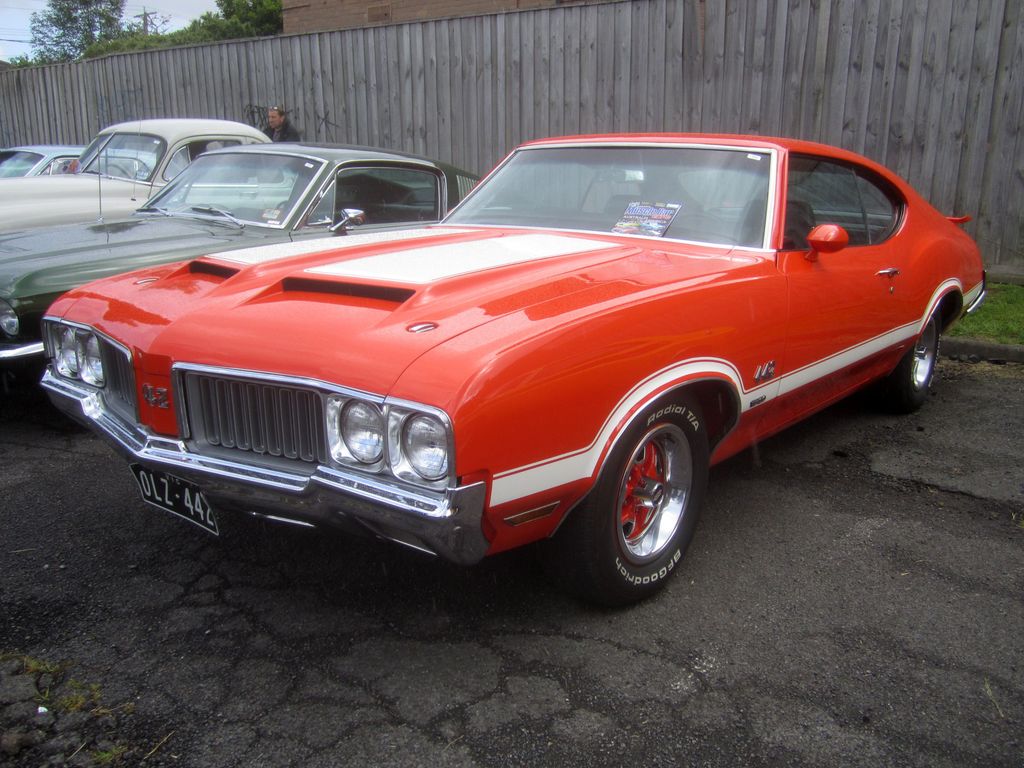
9. **1970 Oldsmobile 442 W-30**The 1970 Oldsmobile 442 W-30 delivered a seismic shock to the brand’s traditionally conservative and sophisticated image, unveiling one of the era’s most excessively powerful muscle cars, cunningly wrapped in a deceptively mature and understated package. For years, Oldsmobile had cultivated a reputation for catering to a more discerning, upscale buyer than its GM brethren like Pontiac or Chevrolet. However, the W-30 package dramatically transformed the 442 into an undeniable street predator, a vehicle dangerously overpowered for the public roads it was designed to roam, truly a wolf in gentleman’s clothing.
At the very core of this formidable sleeper was Oldsmobile’s massive 455 cubic-inch V8, specifically fitted with the W-30 performance package. This comprehensive upgrade included a hotter camshaft, precise special carburetor calibration, a lightweight aluminum intake manifold, and a distinctive fiberglass hood featuring functional air scoops that fed a sealed, ram-air induction system. While officially rated at a seemingly modest 370 horsepower and an earth-shattering 500 lb-ft of torque, the engine’s actual output was widely believed to exceed 400 horsepower, establishing it as one of the most brutally accelerating cars of its time.
What made the W-30 particularly excessive, and indeed dangerous, was its phenomenal torque delivery. While the peak horsepower arrived at a respectable 5,200 RPM, the sheer monster torque was available from barely off idle, with an astonishing 440 lb-ft available at just 1,200 RPM. This incredibly flat and potent torque curve created a car that could effortlessly break its rear wheels loose at virtually any speed with just a moderate application of the throttle. This characteristic, while thrilling for drag strip runs, made it extraordinarily dangerous in wet conditions or in the hands of an inexperienced driver, requiring an immense amount of respect and skill behind the wheel.
Despite Oldsmobile’s inclusion of a heavy-duty suspension system for the W-30, featuring stiffer springs, recalibrated shock absorbers, and larger sway bars, these improvements proved ultimately insufficient to effectively manage the engine’s tremendous, immediate torque. Contemporary road tests frequently reported alarming levels of body roll during aggressive cornering maneuvers and a persistent, unsettling tendency for the rear end to step out unpredictably whenever power was applied mid-corner. Car Craft magazine famously articulated this challenge, noting that the W-30 demanded “a delicate right foot and considerable skill” to be driven quickly on anything other than perfectly straight roads. Furthermore, despite its performance focus, the W-30 retained many of the standard 442’s luxury appointments, contributing to a substantial curb weight of nearly 4,000 pounds. This considerable mass, combined with the period-correct bias-ply tires (F70-14 Goodyears) that offered limited grip, created a dangerous disparity between the car’s acceleration capabilities and its ability to handle or brake effectively. While front disc brakes were standard, their performance was still marginal for the car’s potential, often leading to brake fade after repeated hard stops. The relative rarity of the W-30 package, with only 1,688 produced in 1970, and its subtly understated exterior meant that many drivers tragically underestimated its savage capabilities, sometimes with catastrophic results. This unique combination of gentleman’s car aesthetics with raw, drag racer performance cemented the 1970 Oldsmobile 442 W-30 as one of the most deceptively dangerous muscle cars ever sold to the public.
Car Model Information: 1969 Oldsmobile 442
Name: Oldsmobile 442
Manufacturer: Oldsmobile
ModelYears: 1964–1980,1985–1987,1990–1991
Class: Muscle car
Layout: FR layout
Caption: 1971 Oldsmobile 442
Categories: 1960s cars, 1970s cars, 1980s cars, All articles with unsourced statements, Articles with short description
Summary: The Oldsmobile 4-4-2 is a muscle car produced by Oldsmobile between the 1964 and 1987 model years. Introduced as an option package for US-sold F-85 and Cutlass models, it became a model in its own right from 1968 to 1971, spawned the Hurst/Olds in 1968, then reverted to an option through the mid-1970s. The name was revived in the 1980s on the rear-wheel drive Cutlass Supreme and early 1990s as an option package for the new front-wheel drive Cutlass Calais.
The “4-4-2” name (pronounced “Four-four-two”) derives from the original car’s four-barrel carburetor, four-speed manual transmission, and dual exhausts. It was originally written “4-4-2” (with badging showing hyphens between the numerals), and remained hyphenated throughout Oldsmobile’s use of the designation. Beginning in 1965, the 4-4-2s standard transmission was a three-speed manual along with an optional two-speed automatic and four-speed manual, but were still badged as “4-4-2″s.
Because of this change, from 1965 on, according to Oldsmobile brochures and advertisements, the 4-4-2 designation referred to the 400 cubic inch engine, four-barrel carburetor, and dual exhausts. By 1968, badging was shortened to simply “442”, but Oldsmobile brochures and internal documents continued to use the “4-4-2” model designation.
Get more information about: Oldsmobile 442
Buying a high-performing used car >>>
Brand: Oldsmobile Model: 442
Price: $43,990 Mileage: 24,000 mi.
Read more about: Roaring into History: The 18 Fastest Classic Cars of the 1960s and 70s

10. **1973 Pontiac Firebird Trans Am SD-455**The 1973 Pontiac Firebird Trans Am SD-455 stands as arguably the last truly excessive muscle car of the original golden era. It was a defiant, final howl against the relentless onslaught of encroaching emissions regulations and the burgeoning fuel economy concerns that were rapidly neutering American performance cars. What made the Super Duty Trans Am particularly remarkable was its almost miraculous escape from the stifling corporate constraints that had already begun to choke horsepower figures across the entire automotive industry, allowing it to emerge as a pure, unadulterated performance machine.
At the very heart of this concluding muscle car hurrah resided the legendary Super Duty 455 engine—a powerplant so incredibly overbuilt and robust that it seemed far better suited for the high-stress demands of NASCAR racing than the mundane realities of public roads. Unlike the standard 455 engine, the SD version featured a unique, heavily reinforced four-bolt main block, specially forged pistons, a durable forged steel crankshaft, an aluminum intake manifold, and generously oversized valves. While officially rated at a modest 310 horsepower—a figure deliberately understated due to escalating insurance premiums—the engine’s actual output consistently exceeded 370 horsepower and 390 lb-ft of torque. This made it, astonishingly, one of the most powerful engines available at a time when the first muscle car era was rapidly drawing to a close, a defiant last stand against the performance decline.
However, what truly rendered the SD-455 Trans Am ill-suited for comfortable or safe street use was not just its raw power, but the inherent compromises of the chassis it was mounted within. While the second-generation F-body platform, upon which the Trans Am was built, offered superior handling characteristics compared to its predecessor, it still grappled with a significant front-heavy weight distribution. This fundamental imbalance created a persistent and often alarming tendency towards understeer during initial cornering, which could then abruptly transition into unpredictable oversteer when the prodigious power was aggressively applied mid-turn. The standard Radial Tuned Suspension, while considered advanced for its period, ultimately proved inadequate for effectively managing the SD-455’s explosive power, especially given its propensity for sudden, overwhelming torque delivery. Contemporary road tests vividly highlighted the car’s dual nature. Car and Driver famously recorded a blistering 0-60 mph time of 5.4 seconds—an astonishing figure for 1973, when most performance cars had been severely detuned—yet also pointedly noted that the car required “considerable skill to drive quickly through corners.” High-speed stability was further compromised by the car’s inherent aerodynamic limitations, with significant front-end lift reported at speeds exceeding 100 mph, adding another layer of challenge for the driver.
Car Model Information: 2020 BMW X3 xDrive30i
Name: Pontiac Firebird
Caption: The second, third, and fourth generations of,the Pontiac Firebird Trans Am
Manufacturer: Pontiac (automobile)
Production: February 23, 1967 – August 30, 2002
ModelYears: 1967 – 2002
Class: Pony car,Muscle car
Platform: GM F platform
Related: Chevrolet Camaro
Layout: Front engine, rear-wheel-drive layout
Categories: 1970s cars, 1980s cars, 1990s cars, 2000s cars, All articles with dead external links
Summary: The Pontiac Firebird is an American automobile built and produced by Pontiac from the 1967 to 2002 model years. Designed as a pony car to compete with the Ford Mustang, it was introduced on February 23, 1967, five months after GM’s Chevrolet division’s platform-sharing Camaro. This also coincided with the release of the 1967 Mercury Cougar, Ford’s upscale, platform-sharing version of the Mustang.
The name “Firebird” was also previously used by GM for the General Motors Firebird series of concept cars in the 1950s.
Get more information about: Pontiac Firebird
Buying a high-performing used car >>>
Brand: Pontiac Model: Firebird Trans Am
Price: $19,649 Mileage: 66,810 mi.
Read more about: 21 Legendary American Muscle Cars: Icons of Power and Speed
These ten muscle cars, from the iconic Daytona to the defiant SD-455 Trans Am, represent a thrilling, and at times terrifying, chapter in automotive history. They were machines born from a fierce pursuit of speed and power, often with an audacious disregard for conventional street manners or the looming specter of safety regulations. While modern technology has rendered their raw, untamed nature a distant memory, their legacy endures. These vehicles remind us of a time when manufacturers pushed the envelope to the absolute limit, delivering unbridled performance that, for better or worse, proved simply too fast, too wild, and too uncompromising for the street.

